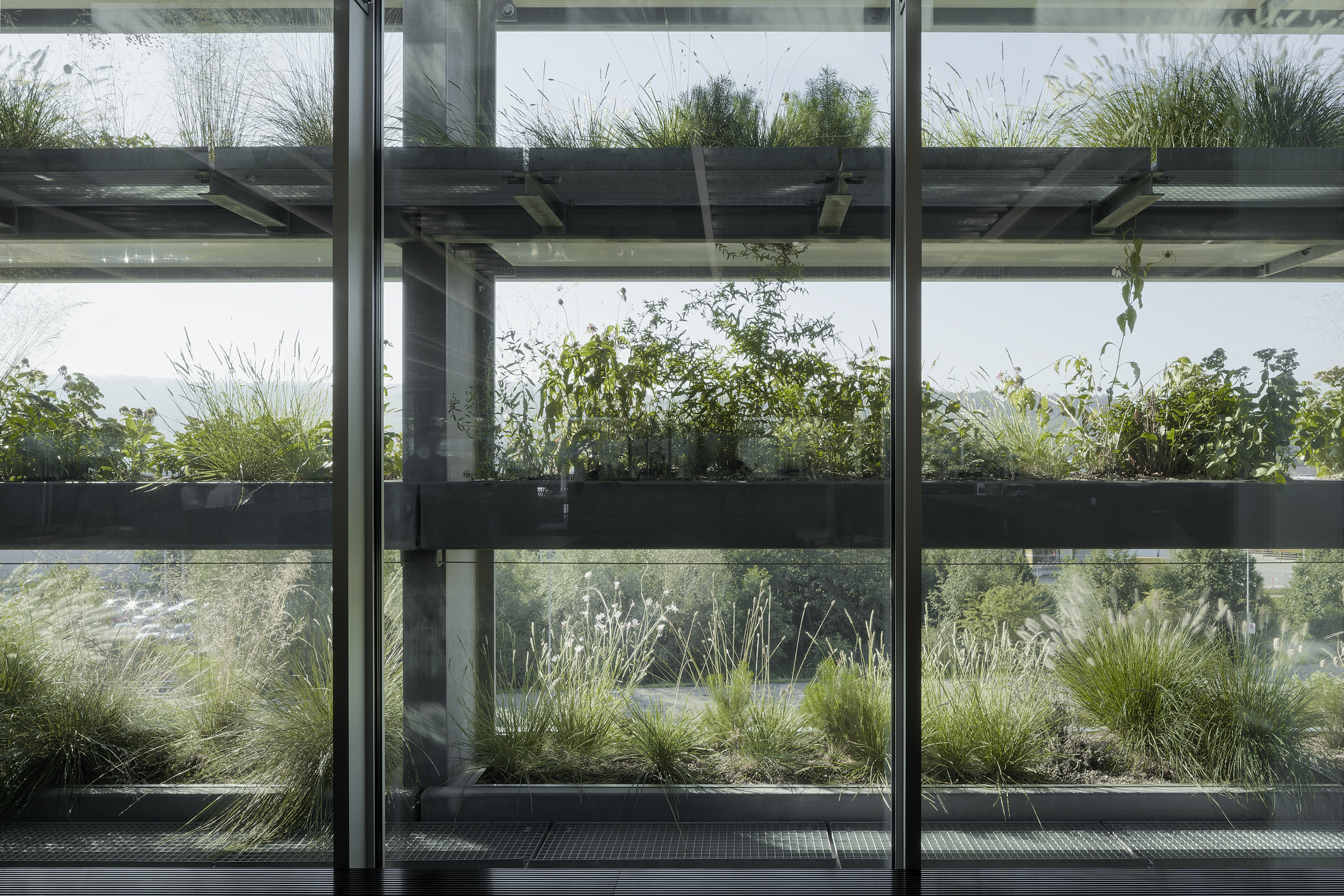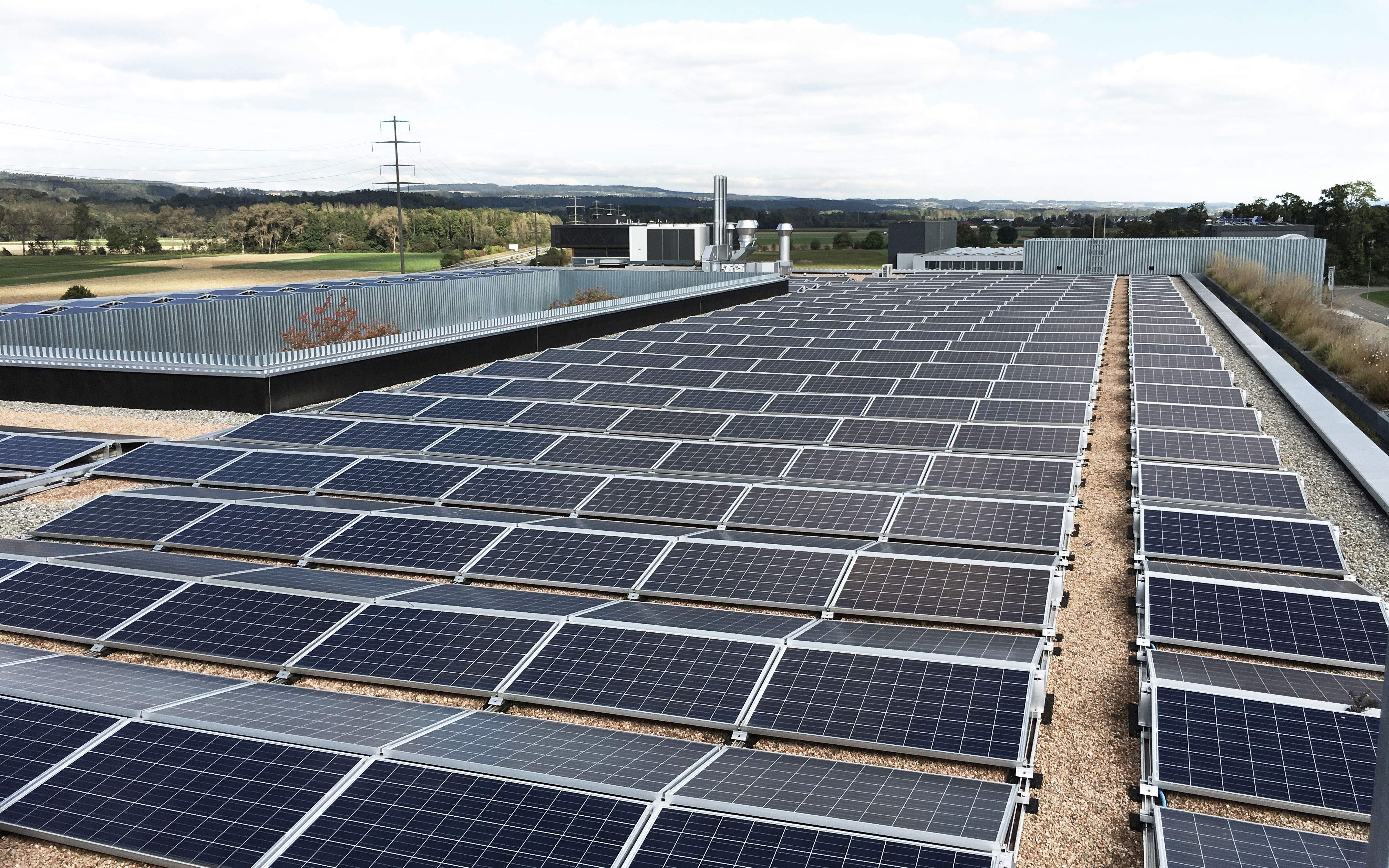Quality & Environment
With Sky-Frame, we create rooms without boundaries, lending a sense of space to any area and providing exclusive quality of life for sophisticated, customised housing. We manufacture Sky-Frame in Switzerland as a kit system and distribute it across the globe via an established sales organisation. Thanks to our innovative strength and determination to bring visions to life, we are constantly developing and adding to our existing range of products.
All our services meet our customers’ requirements in terms of functionality, the environment and quality. Our success is built on the high standards of quality maintained by our employees, the partnerships we forge with our suppliers and sales partners, and the thorough training our sales teams receive in all our products. This way of working and the improvements we make to our business on an ongoing basis are backed up by our quality management processes, which are certified according to ISO 9001.
As an attractive, forward-thinking employer, we offer genuine job security and are always on the lookout for people who share our values of commitment, initiative and team spirit. We pride ourselves on our management culture, which promotes the idea of partnership, and our policy of open communication. To us, entrepreneurial thought and action are concepts to be valued and encouraged. We set great store by the training we give our apprentices, and our training and development programme is designed to help every employee realise their full potential.
We are well aware of the responsibility we have for our employees, society and future generations. That is why we continuously advance and improve our products, services and processes to reduce our consumption of resources and minimise our impact on the climate, air, water and soil. New technologies are opportunities for us to boost our environmental track record. We comply with all environmental legislation as a matter of course.
The environment and nature have always been of great importance at Sky-Frame – after all, we try to integrate them into spaces and create free-flowing transitions. For us, it goes without saying that we strive to preserve them and constantly check our processes for the optimal use of resources. This allows us to avoid wasting resources and energy.
Not least because of this, we invested in a photovoltaic system for our new building at the Frauenfeld site and integrated a brise-soleil with meadowy vegetation into the facade, which provides shade in the summer and allows additional light into the building in winter.
The Brise Soleil
The brise-soleil combines the beauty of a vertical garden with the constructive simplicity of a Swiss flower planter. Featuring louvre-like slats, the brise-soleil extends over the entire length of the south facade and creates a uniform, horizontally structured view.

The plants in the slats are low-maintenance but diverse, and are attractive throughout the seasons. Grasses, hardy perennials and delicate, lush flowers form a meadowy vegetation. The light is let into the building through the fine structure as through eyelashes, creating an appealing view together with the backlight.
Two types of vegetation have been developed for the thirteen layered shelves. Four floors with a high proportion of hardy flowering shrubs add touches of colour and divide the facade vertically. Conspicuous plants with vibrant colours characterise these colourful strips (e.g. Echinacea, Lythrum and Sedum).
In contrast, the design of the meadow strips comprises six types of grass, which form a finely varying curtain with their different habits and foliage colours. Subtle spots of flowers from the accompanying perennials are woven into it.
The stable, dry stalks and inflorescences have a strong aesthetic appeal, even during the winter time, and create attractive scenes in combination with dew, fog and hoar frost. Each shelf also contains a colourful blend of geophytes of various species, which bring the first splashes of colour early in the year. They form the main aspect of vegetation until May, before they are overgrown by the perennials and grasses.
Photovoltaic system
The photovoltaic system on the roof of our headquarters in Frauenfeld has been in operation since April 2015 and exceeds our energy needs, especially in the sunny months. This enables us to regularly feed electricity back into the local power grid. Thus, not only Sky-Frame benefits from sustainable and environmentally friendly solar energy, but also other companies and households in the surrounding area.

The current values can be viewed and tracked at any time via live monitoring.
Certificates
Bisnode D&B only awards its top rating to 2% of all Swiss companies. It reflects outstanding financial and economic stability. Sky-Frame has been given the top rating, which emphasises its value as a reliable partner for the future.
ISO 9001 is the world’s most successful concept and verification process. Certification to this standard underpins and documents the quality awareness of companies in the systematic design of their processes across all levels.
Advantages:
- Transparent processes
- Efficiency in implementing production processes and services
- Corporate management on the basis of clearly defined key indicators and measures
- Clear assignment of tasks and responsibilities
- Targeted support and qualification measures for your employees
- Ready-made tools to help you select reliable partners and suppliers
- Continuous improvement of processes, products and services
- Systematic ascertainment and fulfilment of customer demands
- Annual external audits to ensure high security standards
Thanks to the introduction of a new environmental management system and the ongoing development of internal processes, Sky-Frame is now officially certified in accordance with ISO 14001 Protecting the environment is an integral part of our legal system and is one of the aspects of our company strategy that contributes to our success. Environmental protection in the workplace opens up a great deal of potential savings, in particular by reducing resource consumption and externalising environmental costs.
We are well aware of the responsibility we have for our employees, society and future generations. That is why we continuously advance and improve our products, services and processes to reduce our consumption of resources and minimise our impact on the climate, air, water and soil.
New technologies are opportunities for us to boost our environmental track record. We comply with all environmental legislation as a matter of course.
Advantages::
- ISO 14001 makes it easier to identify areas of potential savings such as reduced resource consumption, which gives us an advantage over our competitors when it comes to lowering costs.
- Complying with environmental regulations improves safety, thereby reducing the danger of incurring any legal consequences or encountering liability issues.
- Our efforts to continually improve our environmental protections are moving forward in accordance with the corresponding regulations and we have been able to speed up the approval process.
- As a certified company, Sky-Frame is a preferred system provider for sliding windows and sliding doors.
- Our environmental policy contributes positively to employee motivation and allows them to more closely identify with the company.
- Annual external audits to ensure high security standards
- We prefer to work with local suppliers. Local partnerships protect the environment and strengthen our region.
An Environmental Product Declaration (EPD) contains statements on the environmental aspects of a product (life cycle assessment and grey energy) and thus enables comparisons between products with the same function.
It records the life cycle of the products, including the environmental impact of resource use, CO2 emissions and sustainability. The cradle-to-gate life cycle assessment covers the environmental effects during production from the cradle to the factory gate (A1 = provision of raw materials, A2 = transport, A3 = production).
Sustainability has to be proven and serves to provide transparency about the environmental impact of Sky-Frame products. The EPD is the basis for the ecological assessment of buildings in building certification systems such as DGNB (Germany), LEED (USA), BREEAM (UK), HQE (France) or SNBS (Switzerland).
The EPD is integrated into the environmental management system of Sky-Frame AG. Essentially, the environmental effects are determined by the production of the safety glass. The life cycle assessment is positively influenced by the in-house photovoltaic system. The internal powder-coating facility also helps to reduce CO2 emissions by eliminating transport routes.
The detailed report (according to EN 15804) with the declaration number EPD-SF-27.0 contains general product information. It applies to one square metre of the Sky-Frame 2 and Sky-Frame 3 technologies.
The Qualicoat Switzerland quality label ensures a consistent quality of coatings and outstanding expertise for clients, planners, developers, metalworkers and facade engineers. It guarantees this with the following measures:
- External audits ensure high security standards (2× annually)
- Suppliers of powder and chemicals are audited to ensure high security
- Regular meetings keep the state of expertise up to date
- Networking opportunities for coating professionals and suppliers
- A clearly defined, international standard with Qualicoat long-term tests
- “Seaside” specification for resilient surfaces near the sea
PAS stands for "product assessment specification". It is a British quality benchmark that is used across the windows and doors industry to provide a comparable security standard for windows and doors. It guarantees that the manufacture of the product has been monitored by an independent and certified company. This reassures customers that products bought from any manufacturer comply with an agreed industry standard.
Windows and doors are tested in three key areas:
- Security: for how long do they keep intruders out of the property? This test looks not just at locks but at the overall strength of the frame and glazing.
- Weather resistance: does the window or door keep out the cold and rain and reduce draughts?
- Endurance: e.g., how many times can you open and close the window or door to check hinge strength and handle quality?
The National Fenestration Rating Council (NFRC) is a United States non-profit organisation that sponsors a certification and labelling programme to indicate the energy efficiency rating of windows, doors and skylights. NFRC labels provide performance ratings for those products in five categories: U-factor, solar heat gain coefficient, visible transmittance, air leakage and condensation resistance. They enable architects, developers, supervisory authorities, construction firms, home owners and planners to compare the energy efficiency of products and determine whether a product is compliant with the building code.
The testing process for UL permits focuses on the potential for fire and personal injury. Unlike the European CE mark, the UL label is not required by law, but especially electronics are virtually untradeable in the US market if they do not carry it. In the United States, the UL label is one of the main indicators of general and fire safety. UL has tested the Sky-Frame drive and confirmed its compliance with the corresponding standard, “UL 325 – Door, Drapery, Gate, Louver, and Window Operators and Systems”. It has awarded the “UL-listed” label for the entire system, which is audited four times a year by a UL field inspector.
The Florida product approval determines if a product meets the state requirements of Florida. It confirms that our system is compliant with local building regulations. To obtain the permit, our products were tested for airtightness and resistance to wind and driving rain. We have also passed the test for resistance to wind-borne debris objects in hurricane-prone regions. This means our system meets all the requirements of the Florida Building Code.
